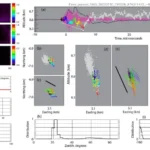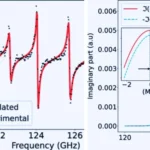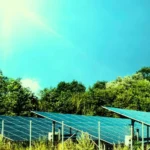Key Points
- Researchers developed a biomimetic coating technology inspired by teak wood using plasma spraying-physical vapor deposition.
- Precise regulation of arc current and heat treatment optimized the coating’s structure and nanoscale composition.
- The coating mimics the teak’s natural layers, enhancing mechanical strength and corrosion resistance.
- Thermodynamic analysis revealed key in-situ reactions between SiO2 gas and Yb2Si2O7 components.
Researchers have introduced an advanced coating technology called alternating vapor/liquid phase deposition, which uses plasma spraying and physical vapor deposition. By manipulating the arc current, the team achieved precise control over the evaporation and deposition of SiO2 while employing heat treatment to facilitate in-situ reactions.
This process resulted in a multi-layered, biomimetic coating resembling the natural structure of teak wood, optimizing its composition, structure, and nanoscale dimensions. With its orderly arrangement, the coating demonstrates enhanced mechanical properties and corrosion resistance, offering a revolutionary protective solution for high-temperature environments such as gas turbine engines.
The findings, published in the Journal of Advanced Ceramics, mark a breakthrough in biomimetic environmental barrier coatings. Dr. Guifang Han, from Shandong University’s School of Materials Science and Engineering, emphasized the innovative nature of this approach, which overcomes significant challenges in controlling coating composition and structure during high-temperature processes. Teak’s renowned mechanical strength and environmental resilience inspired the choice of teak as the biomimetic model.
Through meticulous regulation of the deposition process, including arc current adjustments, researchers successfully constructed a regularly arranged multi-layer structure within the coating. This structure emulates teak’s natural layers, a key factor in boosting mechanical robustness and corrosion resistance.
Additionally, thermodynamic analysis of the volatilized SiO2 gas revealed insights into its interactions during deposition. The team applied heat treatment technology to enable an in-situ reaction between gas-phase SiO2 and Yb2SiO5, a product of Yb2Si2O7 decomposition. This reaction re-formed Yb2Si2O7, ensuring precise regulation of the coating’s composition and nanoscale architecture.
Dr. Han highlighted the importance of further research, systematically evaluating the coating’s corrosion resistance and mechanical performance. Comparing these findings with existing studies is critical to validating its practical application. The ultimate goal is to commercialize this coating technology, significantly improving the durability and efficiency of high-temperature applications such as gas turbine engines.










